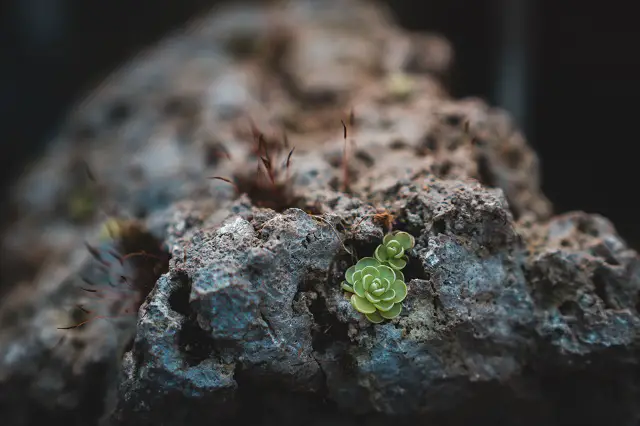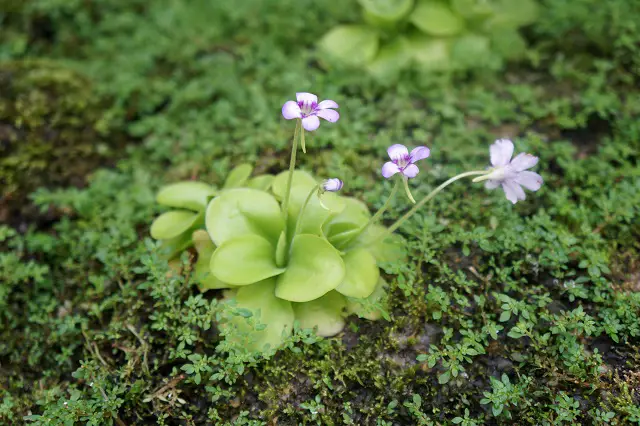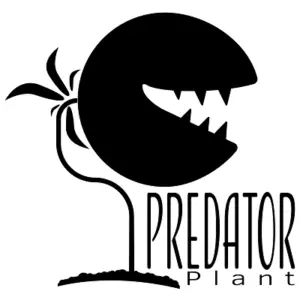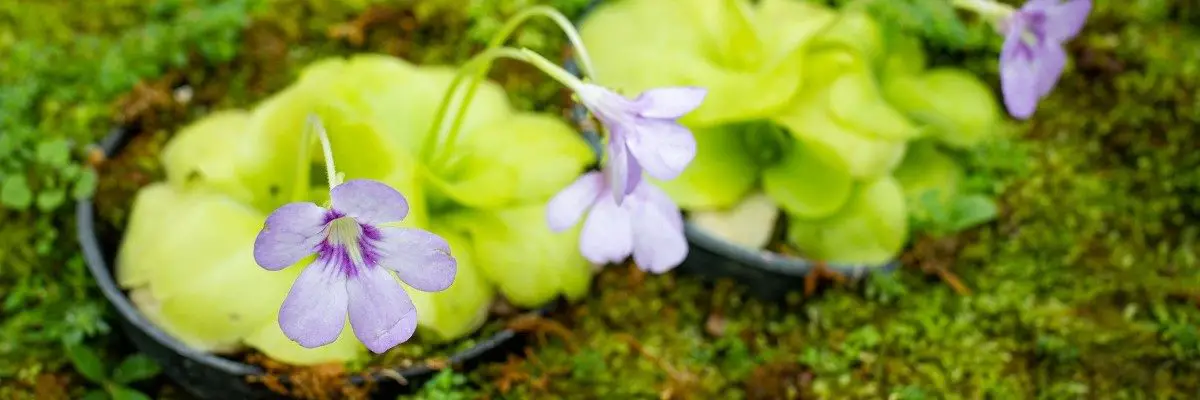How Do Butterworts Eat: Butterworts capture and digest their prey using a mechanism resembling sticky flypaper. The upper surface of the leaves is covered with two kinds of sticky glands. The glands trap the small insects in a sticky substance.
On top of the single stalk is several secretory cells called the peduncular glands. The cells produce mucilaginous secretions on the leaf, forming visible droplets. The sessile glands release enzymes necessary to begin digestion by breaking down the digestible parts of the insect and reabsorbing their fluids through the cuticular holes on the surface of the leaf after the peduncular glands have captured the prey.
As a result of their wet appearance, these plants probably help lure prey into seeking water. A limited amount of enzymes are secreted by the droplets, and the main purpose of these droplets is to trap insects.
Distinctive cells are found at the bottom of the stalks that, when contacted by any insect, release additional mucilage from the peduncular glands. Sessile glands are found on the surface of butterwort leaves and are the next type of gland found on the plant.
After an insect has been captured and digestion has begun, the initial burst of nitrogen triggers the release of enzymes by the sessile glands. Several enzymes digest the insect’s body, including amylase, esterase, phosphatase, protease, and ribonuclease.
It is these fluids that are then absorbed through the surface of the leaf utilizing cuticular holes. In the end, the only thing that remains is the chitin skeletons of the bigger insects on the leaf surface.
Over a matter of hours, the leaf edge closest to the dead animal slowly rolls toward it. This helps in the digestion of the dead insect. Eventually, it flattens again, awaiting the next insect. Aphids, springtails, midges, and other small insects are easily captured since larger insects escape these microscopic glands.
Among the few herbivorous plants on Earth, butterworts can also take up nutrients from pollen and other proteins-rich parts of plants attached to their leaves. Due to the sticky glands’ limited effectiveness and the persistence of insect skeletons on the leaf surface, the leaves lose their effectiveness over time as traps.
Interestingly, butterworts also interact with insects in other ways than serving as potential food sources. They provide attractive, showy flowers with pollen from flying insects. This is why the number of insects captured by these plants decreases as the growing season progresses.

How do you feed butterworts?
It is impressive how well Butterworts do on their own when it comes to catching food. If you notice they are having problems, sprinkle a bit of fish food or bloodworms every two to three weeks on a sticky leaf. Ensure that food is kept away from the sensitive crown to minimize the growth of bacteria and mold.
Because Butterwort cannot catch large insects, it must feed on smaller prey to survive. Among the insects eaten by butterworts are gnats, midges, flies, ants, and springtails. At home, the Butterwort is also capable of consuming fish food, mealworms, and bloodworms.
Among the many habitats, Butterworts are commonly found growing in meadows, bogs, pond edges, swamps, bogs, and fens, as well as moist, marshy places with many insects. In addition to containing nitrogen, these bugs also contain other nutrients that plants need to survive. Because they share the same habitat, pinguicula usually feeds on insects in the wild.
Furthermore, in addition to insects, the pings benefit from other sources of food that contain nutrients such as nitrogen in addition to insects. The idea of giving fish food to Butterworts may seem strange at first glance, but if you think about it, it does make sense.

How do butterworts acquire nutrition?
Butterworts rely on their sticky secretions to catch and feed insects with vital micronutrients they require for long-term health and growth instead of obtaining nutrients from the soil.
Insects are a dietary supplement that helps the plant grow faster. Yet, they are not essential to the health and survival of the plant in large quantities. They still absorb and store energy from the sun (photosynthesis), just as any other green plant does.
We recommend feeding your plant very small live or freshly killed food items that are small enough to digest quickly if you choose to feed them. These plants do a great job catching plenty of tiny bugs, so there is no need to feed them.
As a result, the plant can digest the food more efficiently, preventing the food from becoming moldy.
Using fertilizer on the soil of your carnivorous plants is not recommended. There have been reports of growers applying just a tiny amount of very weak orchid fertilizer to the leaves of their plants.

